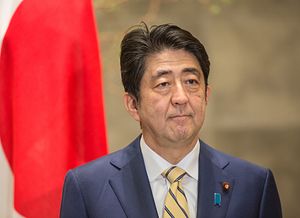On July 10, Japan held an election for the House of Councillors (Upper House). While the final results are still being confirmed, a clear winner and a loser have already emerged.
The clear winner of the election on Sunday is the Liberal Democratic Party (LDP)-Komeito coalition. Between the two parties, they scored a handsome victory, increasing their seats solidly above the pre-election level.
The biggest loser of the election was the main opposition, the Democratic Party (DP). The number of seats occupied by the DP dropped by double-digits, moving the party farther away from where it can call itself “a credible opposition.” The other opposition parties did not do much better, either. The Social Democratic Party of Japan (SDPJ) lost its incumbent party president in the election, bringing the total number of seats they have in the Upper House to only two.
There are a couple of interesting take-home points from Sunday’s election. One is the opposition parties’ utter failure in connecting with the voters. Their pre-election campaign rhetoric predominantly focused on the implication of the LDP-Komeito ruling coalition winning a two-thirds majority in the Upper House, given Prime Minister Shinzo Abe’s inclination to push for constitutional revision, namely the revision of Article 9. But the opposition’s tactics were completely out of sync with the voters.
For this election, voters’ primary concerns were socioeconomic issues. They were wondering if Abenomics, which has had no tangible positive impact on their day-to-day lives after more than three years, will ever succeed in revitalizing the Japanese economy. While opposed to the consumption tax increase in the fall,voters were nervous about what the delay of the tax hike could mean for their health insurance, social security, and the general “social safety net” that the previous generations have enjoyed. They were frustrated that, despite Abe’s declared intention to move toward a society in which “women can shine,” so much remains to be desired when it comes to the social infrastructure to support women, especially working mothers. With so many worries for the future in their own day-to-day lives, the voters had very little appetite for ideology-driven issues such as the constitutional reform.
The other main takeaway was the voting behavior of younger voters. This was the first election held after the voting age was lowered to 18. Overall, the voting rate among the newly added younger voters remained low: according to a survey by the Ministry of Internal Affairs and Communications (soumusho), the voting rate among 18 and 19-year-olds hovered around 45 percent. But among those who voted, a considerable percentage–over 40 percent–voted for the LDP. This voting behavior defied the pre-election speculation that the election would illustrate a generational divide, with the older voters more likely to vote for the ruling party to preserve the status quo.
What do these voting trends mean for Japanese political leaders? First, the solid win by the ruling coalition speaks loudly to the voters’ desire for stability in the government. Whatever misgivings the voters may have about the Abe government, they remain willing to choose the LDP-Komeito duo over the opposition for the sake of predictability, particularly when the opposition parties have so far failed to come up with a united (or at least coordinated) and concrete policy platform on the issues voters care about.
Second, the election results clearly show the further weakening of the opposition parties, the DP in particular. The disappointing results for the DP are a clear reminder that voters still have not forgiven them for their poor performance as a ruling party between 2009-2012 and are unwilling to consider them as a viable alternative to the LDP. This is an extremely bad news for the DP, which struggles to present itself as the alternative to the LDP.
Finally, the voters’ choice in Sunday’s election should be a reminder to all politicians that the Japanese public demands that their leaders prioritize socioeconomic issues that affect their day-to-day lives. They did not allow the LDP-Komeito to gain a healthy majority in both the Lower and Upper Houses in order to pursue constitutional reform. Rather, they have chosen to keep Abe and company in power so that the ruling coalition can make difficult but necessary decisions in economic and social policies that would benefit the Japanese economy in the long run. In other words, now is the time for the ruling coalition to press forward with the reforms associated with the “Third Arrow” in Abenomics, which has had very little to show for thus far.
For now, Abe seems to get the voters’ message. In a press conference on the afternoon of July 11, he acknowledged that the voters gave a mandate “to accelerate Abenomics” through this election, shying away from saying anything specific about his stance toward the timing of constitutional revision. If the opposition parties are serious about their job of providing checks and balances vis-à-vis the government, they should focus their efforts on challenging the ruling coalition in the debate over economic and social policies, rather than continuing their tone-deaf criticism against Abe for his stance toward constitutional revision.

































